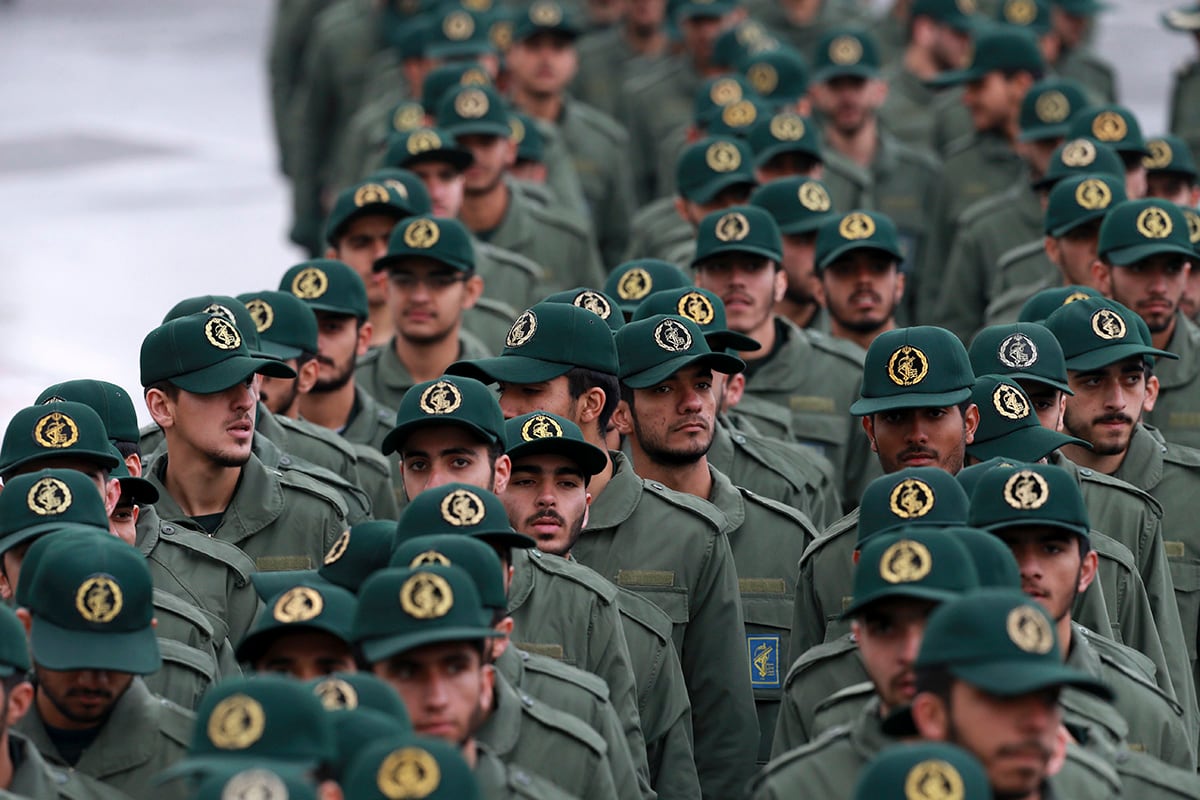Late at night somewhere not far from the coast of Iran, U.S. sailors sleep on board ship when suddenly a dull thud reverberates through the hull and shocks them awake.
An Iranian mini-submarine or possibly a drone has wound its way through layers of defenses, struck the side of the warship and water is flooding in.
In the hours following the incident, Iranian leaders say it wasn’t an intentional attack. Some of their naval personnel went rogue.
U.S. strikes on key missile defense positions along the Iranian coast are already underway. Those strikes signal salvos for some a country away, armed and ready to hit U.S. troops in short notice.
Near dawn at a dusty outpost along the Syria-Iraq border a handful of U.S. Marines, soldiers and special operations forces are awakened to a barrage of rockets and mortar fire like they’ve never seen on this or any other recent deployment.
So far, a full-scale conflict between the U.S. and its allies and Iran and its proxies remains in the realm of wargaming at the moment. But with tensions rising between the U.S. and Iran, and as the U.S. moves more troops and military assets into the region, Pentagon planners and top U.S. intelligence officials have begun taking a closer look at what such a conflict might entail.
Iranian coastal defenses would likely render the entire Persian Gulf off limits to U.S. Navy warships. Iran’s advanced surface-to-air missile defenses would be a significant threat to U.S. pilots. And Iran’s arsenal of ballistic missiles and cruise missiles put U.S military installations across the U.S. Central Command region at risk. The cost in U.S. casualties could be high.
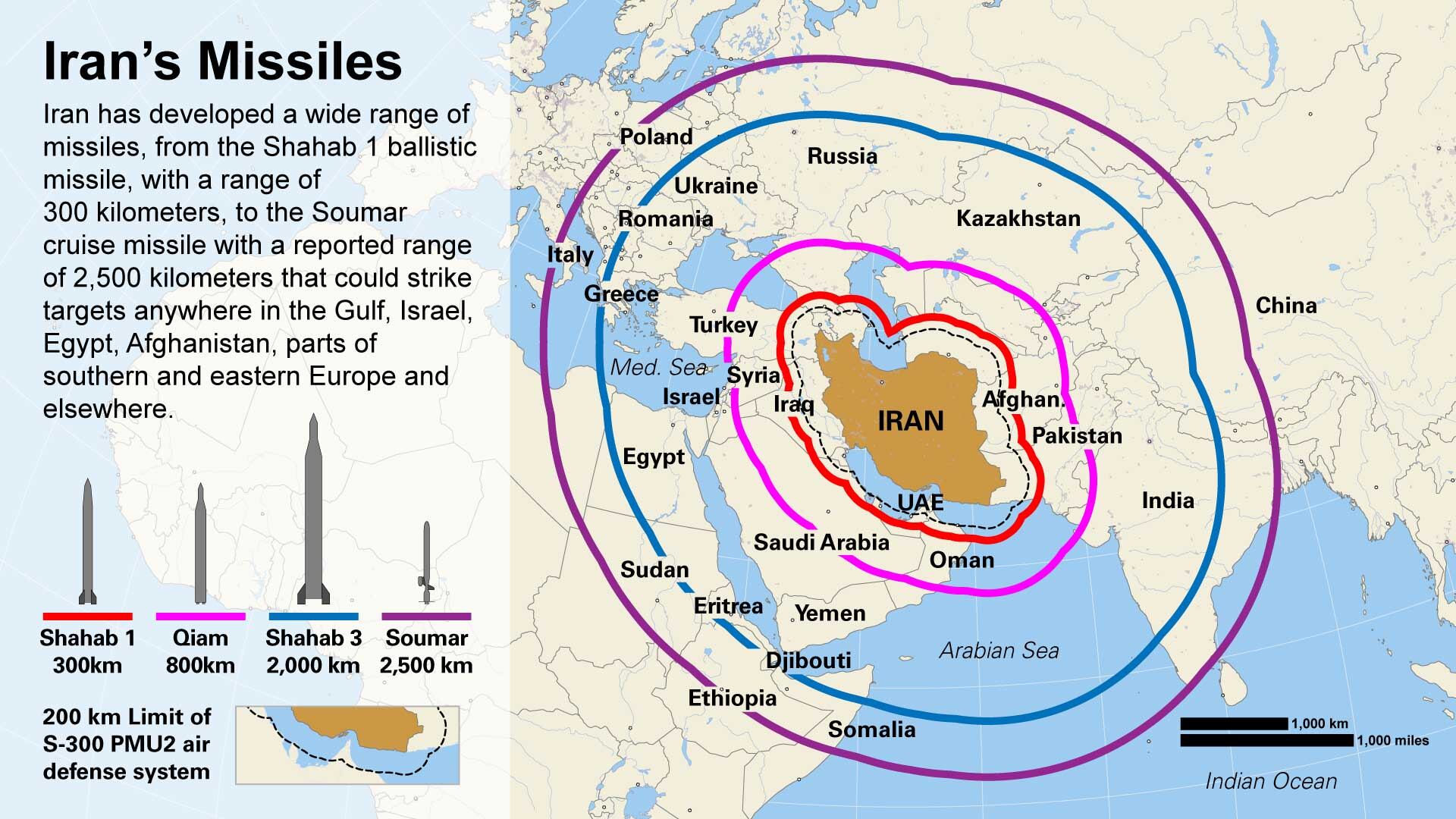
Beyond that, it’s unclear what victory might look like. Nobody is advocating a large-scale occupation like the one that followed the 2003 U.S. invasion of Iraq. And many experts caution against hoping or assuming that a massive U.S.-led military invasion will prompt Iranians to overthrow their Islamic regime and transform Iran into an American ally.
Iran's military forces total roughly 545,000 active personnel and 350,000 reserve personnel, including about 125,000 men within the IRGC, according to the Strauss Center at the University of Texas, Austin. But while its total force strength is quite large, the quality is limited by an inability to purchase Western technology and severe economic sanctions.
RELATED
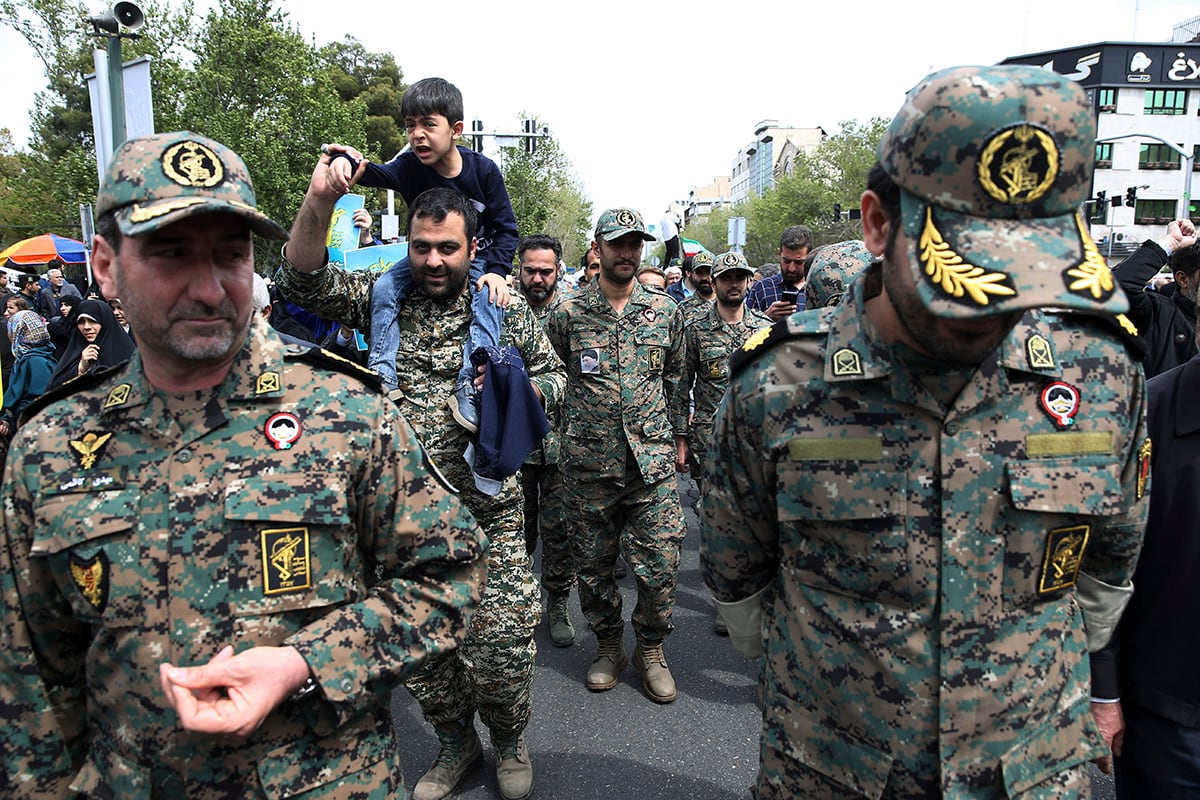
Military Times interviewed more than a dozen military experts, including current and former U.S. military officials, about how a conflict might begin and how it could play out. This is what they said could happen:
There are jihadi strikes at key transit points such as the Suez Canal and the Straits of Hormuz. The waters off of Yemen are inundated with sea mines, making ship travel throughout the region a slow, almost suicidal process.
Leaders from both the United States and Iran broadcast their bellicose rhetoric via a host of platforms, each pointing the finger at the other, each saying that neither wants war but that the aggression cannot stand without a response.
Crowds gather, seething angrily at U.S. and coalition sites in Iraq, first throwing stones before a car bomb bursts open a hole in the side of the walled compound.
Evacuations ensue, U.S. forces simultaneously flood into key battle positions as others are pulled back to reinforced bases in partner nations.
Electronic attacks volley across cyberspace, leading to entire power grids shut down. Electronic jamming floods the airwaves, degrading communication and control across military networks as commanders battle to see what’s happening in real time in a way they’ve not had to contend with for more than a generation, if ever.
All the while the network of proxy Iranian jihadi cells, from the Middle East to Central America find novel and makeshift ways to poke, prod and provoke the United States by hitting soft targets whenever and wherever possible.
Thousands die.
The few U.S. and allied boots on the ground inside of Iran belong to clandestine special operations forces and other government agencies who surreptitiously locate and destroy key targets or shuttle key insiders out of the war-torn country of Iran.
Weeks, perhaps months later, ammunition stocks depleted, no more major targets to hit, smoke and dust subside and an uneasy stasis emerges.
More likely than not, the leadership regime in Iran remains in place as a weakened nation strives to put itself back together. And a nuclear program begins anew.
Earlier this month, Iran’s leaders announced that they would restart uranium processing unless other signers of the 2015 nuclear deal made between them, the United States, China, France, Germany, Russia, the United Kingdom and the European Union, could find ways to ease the harsh sanctions imposed by the United States when it pulled out of the deal last year.
What followed was leaked reports of war plans being drawn up that could include as many as 120,000 U.S. troops headed to the region, a number similar in size to the 2003 Iraq invasion. What followed also included leaders of both Iran and the United States claiming they didn’t want war, yet each preparing in many ways for exactly that outcome. Acting Defense Secretary Patrick Shanahan followed that up by saying about 900 additional troops were headed to the region, on top of those manning Patriot batteries already shipped out.
The United States sent a carrier battle group and long-range bombers to the region.
Reports allege that the head of the Iranian proxy groups have been ordered to prepare for a range of strikes against U.S. and allied targets across the Middle East. Those involve some Shia groups in the region, but not all, as some are aligned with Iran but others operated based on their own, local needs.
Could this all be political saber-rattling? Or could provocations unsheathe that saber?
As one expert told Military Times, with thousands of troops in the region and more headed that way, there is, “the opportunity to miscalculate and watch this spiral out of control is always there.”
Maritime
Instead of competing directly with the U.S. Navy, Iran uses swarming small boats, drones and sea mines to deter and harass the fleet, especially at choke points such as the Strait of Hormuz, a key corridor that connects the Persian Gulf with the Gulf of Oman.
To counter maritime harassment, the United States military would use surface vessels and airborne intelligence, surveillance and reconnaissance assets to detect, avoid or eliminate those threats, experts said.
But to be clear, there isn’t any publicly reported substantive evidence that total “unsafe” or “unprofessional interactions between U.S. Navy and Iranian ships, drones have increased.
There had been 22 such incidents in 2015; 36 in 2016; 14 in 2017 and as of early May there hadn’t been an “unsafe encounter” since 2017, according to U.S. Naval Forces Central Command.
That said, one threat to U.S. forces in the region is the Fateh, an Iranian semi-heavy submarine armed with subsurface-to-surface missiles with a range of about 2,000 kilometers.
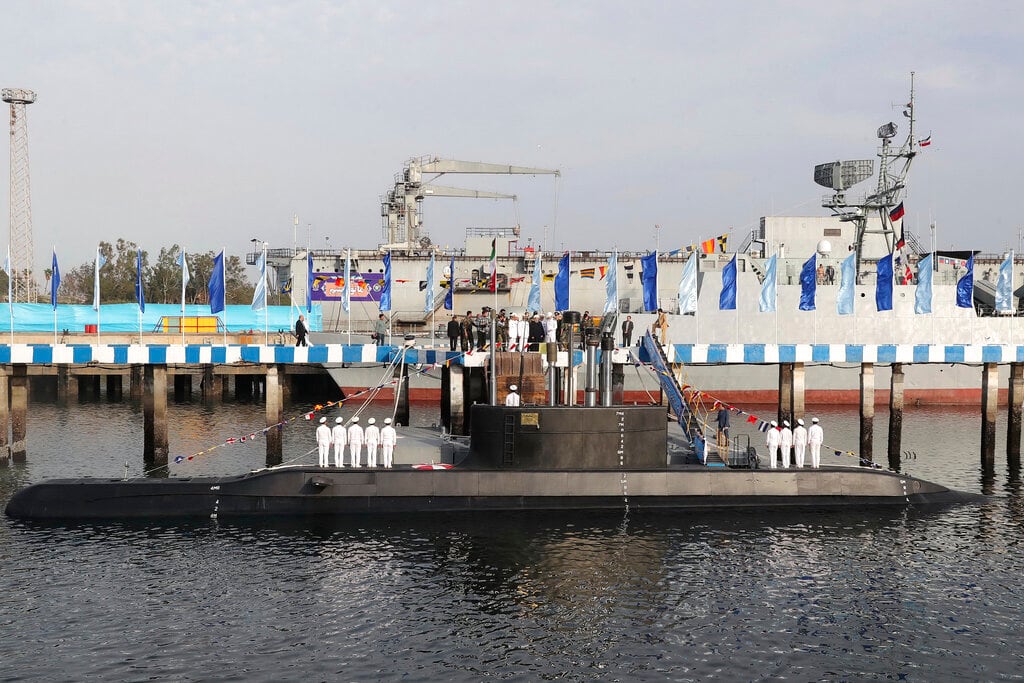
Another threat is the Iranian Ghadir-class minisub, a fleet of about 23 115-ton submersibles that are operated by a handful of crew and are capable of firing a couple of torpedoes. But renewed attacks by small vessels are still a serious threat.
“It’s small, so it’s able to operate submerged in the [shallow] Persian Gulf pretty easily. It’s hard to find on sonar because it’s pretty quiet when its running on battery and because of its size, active sonar doesn’t give you a great return,” Bryan Clark, a former submariner and senior aid to chief of naval operations, now an analyst at the Center for Strategic and Budgetary Assessments.
The constrained geography of the Gulf also gives ships short warning times to respond to such attacks, he said.
The Iranian Ghair-class has been somewhat of a success but lacks the staying power of U.S. vessels.
“They can’t go more than a couple of days underway, it’s more like a patrol boat,” Clark said. “You’re limited by supplies, fuel, and just human endurance operating on a platform that isn’t designed to support long-term operations. But it doesn’t really need to because you’re talking about the Persian Gulf.”
As a sneak-attack capability, it’s one of Iran’s better options. As with anti-ship cruise missiles, Iran might not make a direct hit on a U.S. target, but even minor damage is a major public relations victory.
In a confrontation with Iran, systems such as the Rolling Airframe Missile, Standard Missile and Evolved Sea-Sparrow Missile are more than capable of handling Iran’s inventory of anti-ship cruise missiles.
If the U.S. would want to use force in the Strait of Hormuz, it is more likely to do so with smaller ships such as the littoral combat ship, knowing that the point-defense systems on board can combat the air threat, Clark said.
In the 2003 Iraq invasion, the United States sent an armada – five carrier battle groups, amphibious ready groups and two amphibious task forces. That kind of operation wouldn’t be as likely for Iran, Clark said.
But any large-scale conflict would likely still require three carrier strike groups, Clark said, to free the U.S. from the kinds of restrictions host nations put on the usage of aircraft launched from their facilities.
Unlike with the Iraq War, you can conduct strikes from the Arabian Sea rather than from the Persian Gulf, so you’d focus on the southern coast of Iran, near the Strait of Hormuz opposite Oman.
“That would be the area you’d focus your attacks to clear out the cruise missile batteries and air defenses. And once you clear out the air defenses there would be a corridor you could use from the south to go engage coastal defense cruise missiles from the east, from behind,” Clark said.
Ground
The Army will have a vital role in any conflict in the region, but with no plans yet to invade Iran, their part won’t look like it did in Iraq with Strykers, Abrams tanks and Humvees rolling across the desert.
Instead, the Army will be orchestrating a vast logistics network bringing Patriot missile batteries, High Mobility Artillery Rocket Systems and attack helicopters to bear on Iranian systems.
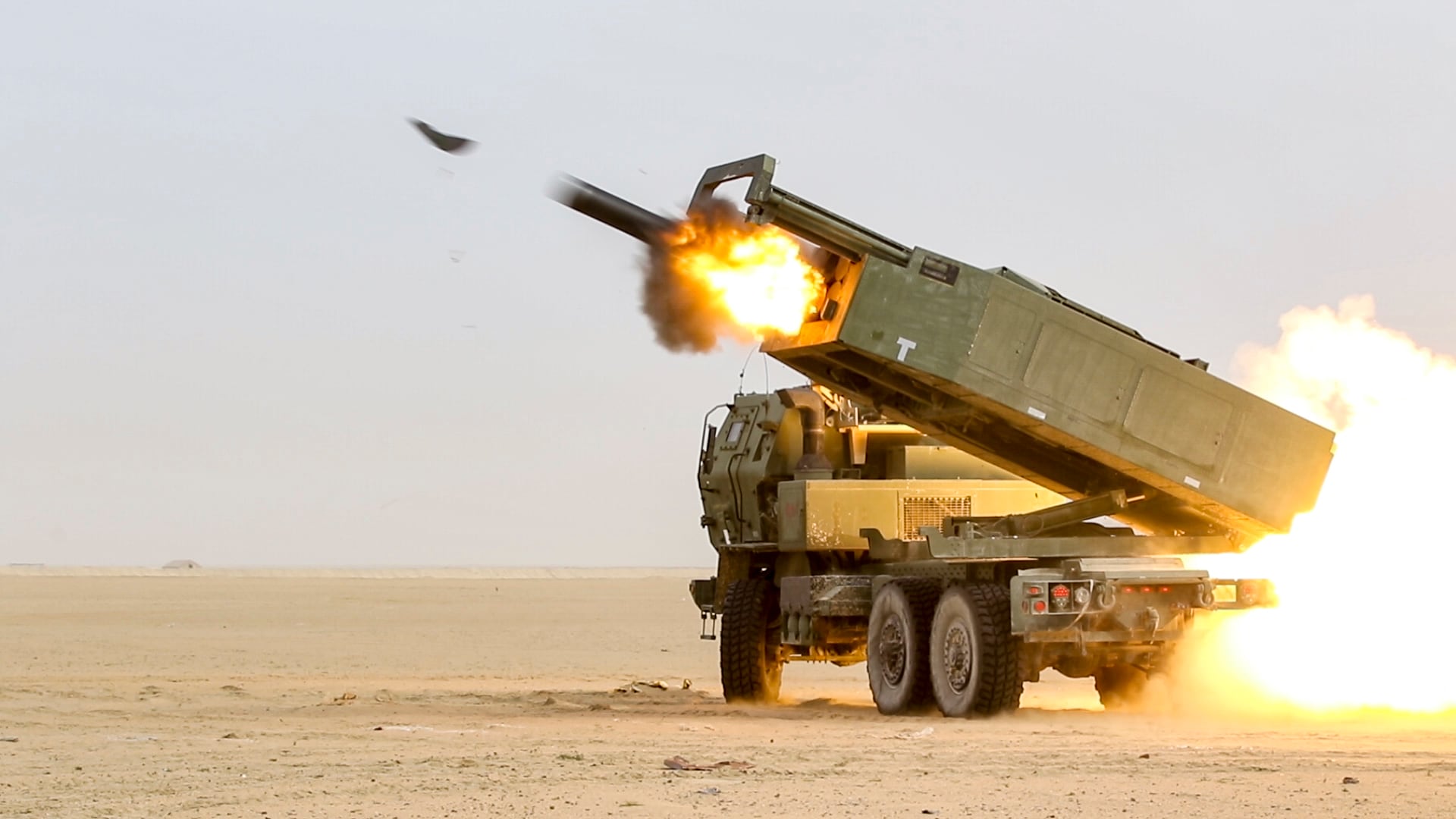
Another key piece of work for soldiers will be providing protection and defense to key U.S. and allied installations from not just Iranian missiles but also from proxy groups who’d attack those areas in Syria, Iraq, Saudi Arabia and Kuwait, among others.
And those proxy groups can hit U.S. units and allies across the region. There’s a host of groups that must be considered far from Iran’s borders in Syria, Yemen and Iraq among others.
Philip Smyth, Soref Fellow at the Washington Institute, told Military Times that the proxy groups go beyond amateur IED planters in rural regions of Iraq. They include battle-hardened groups such as Hezbollah, with deep ties to Islamic Revolutionary Guard Corps.
“If you’re out there at a FOB just on the Iraq-Syria border there are at least 10 very (Iran) loyal Shia militias,” Smyth said. “Not just the run of the mill but the nastiest out there. They really made their bones bombing our guys.”
And they have weapons from advanced explosively formed penetrators that defeated some of the best counter-IED tech to rockets and other ways to harass U.S. troops, he said.
“If you are going to see a conflict, it is going to be conducted with massive amounts of precision air-delivered weapons, with some special ops forces, and a large dose of offensive cyber-attacks,” said retired Air Force Lt. Gen. Dave Deptula, dean for the Mitchell Institute for Aerospace Studies.
The U.S. intelligence community has a good understanding of where the Iranian centers of gravity are located in Iran and the force required to take them out, a former chief of staff with U.S. Central Command said on background.
But not everything is known.
“There may be buried facilities or tunnels somewhere that we don’t know about, but I do think we have a significant amount of good intelligence on where their assets are,” the former CENTCOM official said.
There has been widespread reporting in the Western and Iranian press about underground bunkers and depots to protect the country’s assets, which are still targetable, the official said.
Any work that would be done behind enemy lines to disable missile threats, breaking supply lines or taking out nuclear fuel development sites would be taken on by special operations forces across the services.
That would include targeting, securing high risk areas such as nuclear sites, establishing forward airfields inside Iran conducting deep reconnaissance on the ground. It would look similar to work they did did during the Persian Gulf War where teams hunted down SCUD launchers being moved around Iraq to strike at Israel, hoping to pull them into the war and ignite a regional conflict.
Air
Any air campaign against Iran would be vastly different from past U.S. Air Force operations, mostly because Iran’s air defenses are more modern than past foes.
To defeat their air defense and early warning systems, the United States would have to physically destroy them or disrupt them through electronic warfare. To get close to advanced air defenses, aircraft must decrease their radar signature as much as possible.
Bombing Iran would therefore require stealth aircraft to circumvent its Russian-made S-300 missile systems air defense systems, and domestically produced Bavar 373 surface-to-air missiles.
Countering those weapons systems would require the F-22 and F-35s due to their stealth capabilities, according to Deptula, the retired U.S. Air Force three-star general.
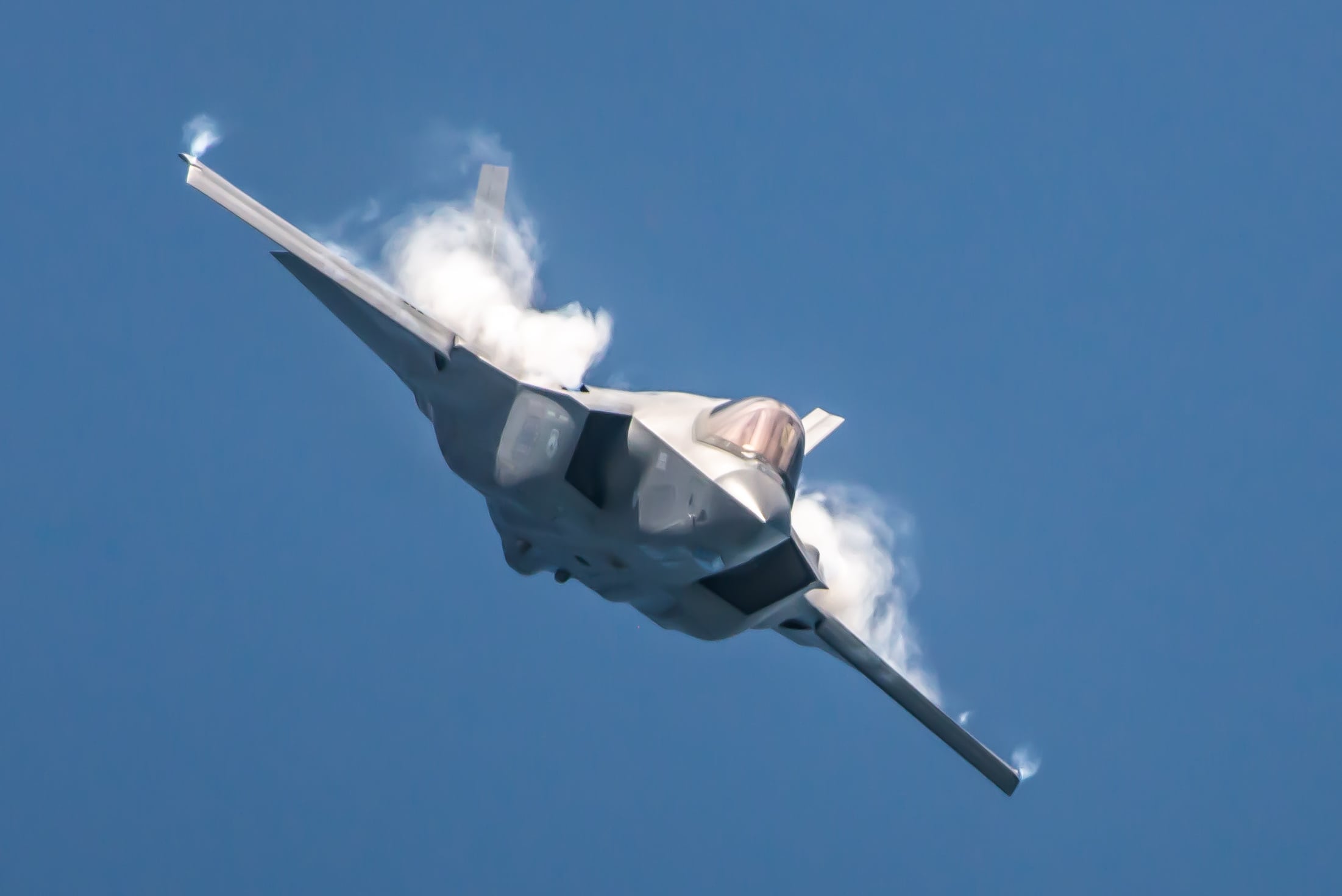
However, Iran’s more lethal air defenses would not necessarily curtail a U.S. air campaign.
The air defenses “could be dealt with,” Deptula said, adding that the strikes would be “rapid, violent and decisive,” lasting for “a period of days and weeks, not months and years.”
Strategic surprise is difficult to achieve these days, Deptula said, meaning the movement of necessary aircraft into theater would be well-known. But operational and tactical surprise remain.
The U.S. Air Force would likely be launching a strike campaign more similar to Desert Storm, than its fight against the Islamic State of Iraq and Syria.
“During Desert Storm, we averaged over 1,200 strike sorties a day,” Deptula said. Even the Iraq War in 2003 involved about 800 strike sorties per day. That’s compared to between 10 and 50 strike sorties per day during the anti-ISIS campaign, depending on the battles being looked at.
“This is not a single strike. This is a campaign,” Deptula added.
Missiles
Iran has the region’s largest and most diverse arsenal of ballistic missiles, according to the Center for Strategic and International Studies Missile Defense Project. The country also possesses increasingly sophisticated cruise missiles, an array of shorter-ranged anti-ship missiles and challenging air defense systems.
Those missile have ranges that run from 300 kilometers up to 2,500 kilometers, giving them the ability to reach targets as far away as Italy, according to a CSIS Missile Threat report.
Just as important as pure hardware is Iran’s creativity in operational concepts.
“For instance, using UAVs to target Patriot radar,” said Tom Karako, the director of the CSIS Missile Defense Project. “Now think that through. Using a UAV to target the radar for something that is designed to defend against a missile.”
The Iranians have put a lot of time and energy into missile systems as opposed to other items such as advanced attack aircraft.
While Iran already has a ballistic missile range in excess of 2,000 kilometers, it may soon have a cruise missile to layer on top of that bubble.
“They reportedly tested a Soumar cruise missile with a reported range of 2,000 kilometers,” Karako said. “If you have a cruise missile, you can go around ballistic missile defenses and attack them from behind.”
That would allow Iran to potentially strike Israel, anywhere in the Gulf, any base in Afghanistan and parts of Egypt.
After the U.S. invasion of Iraq in 2003 and the Arab Spring in 2011, Iran began exporting its missile capabilities to various groups, marrying its older export of Islamic revolution to militant groups, with its strategy of missile defense.
“These things basically solidify the proxy strategy for Iran,” said Behnam Ben Taleblu, a senior fellow at FDD focused on Iranian security and political issues.
In the Persian Gulf, coastal defense missiles help prop up an anti-access, area denial bubble. While not as sophisticated as Russia or China, they may achieve their localized aim of making adversaries think twice about any kind of action against the Iranian homeland, he said.
Anti-ship ballistic or anti-ship cruise missile pose a significant threat to U.S. warships and civilian commercial ships in the Persian Gulf, Taleblu said. In 2016, for instance, the U.S. destroyer Mason was the target of an unsuccessful cruise missile attack off Yemen's coast.
While any strike or combat action could be the result of reacting on the part of either the United States or Iran, the outcome is far from set.
Though the current administration has recently backed off from openly supporting regime change in Iran, it’s not clear that military action could even accomplish such a goal.
As Aftandilian said in his recent paper, while some believe that strikes on Iran would lead to upheaval to cause that regime change, “they are likely to be disappointed.”
“Under that scenario, Iranians of most political persuasions would likely rally around the flag and support the regime against ‘the aggressor’ as they would term it,” he wrote.
Todd South has written about crime, courts, government and the military for multiple publications since 2004 and was named a 2014 Pulitzer finalist for a co-written project on witness intimidation. Todd is a Marine veteran of the Iraq War.
Kyle Rempfer was an editor and reporter who has covered combat operations, criminal cases, foreign military assistance and training accidents. Before entering journalism, Kyle served in U.S. Air Force Special Tactics and deployed in 2014 to Paktika Province, Afghanistan, and Baghdad, Iraq.
Shawn Snow is the senior reporter for Marine Corps Times and a Marine Corps veteran.
Howard Altman is an award-winning editor and reporter who was previously the military reporter for the Tampa Bay Times and before that the Tampa Tribune, where he covered USCENTCOM, USSOCOM and SOF writ large among many other topics.
David B. Larter was the naval warfare reporter for Defense News.
